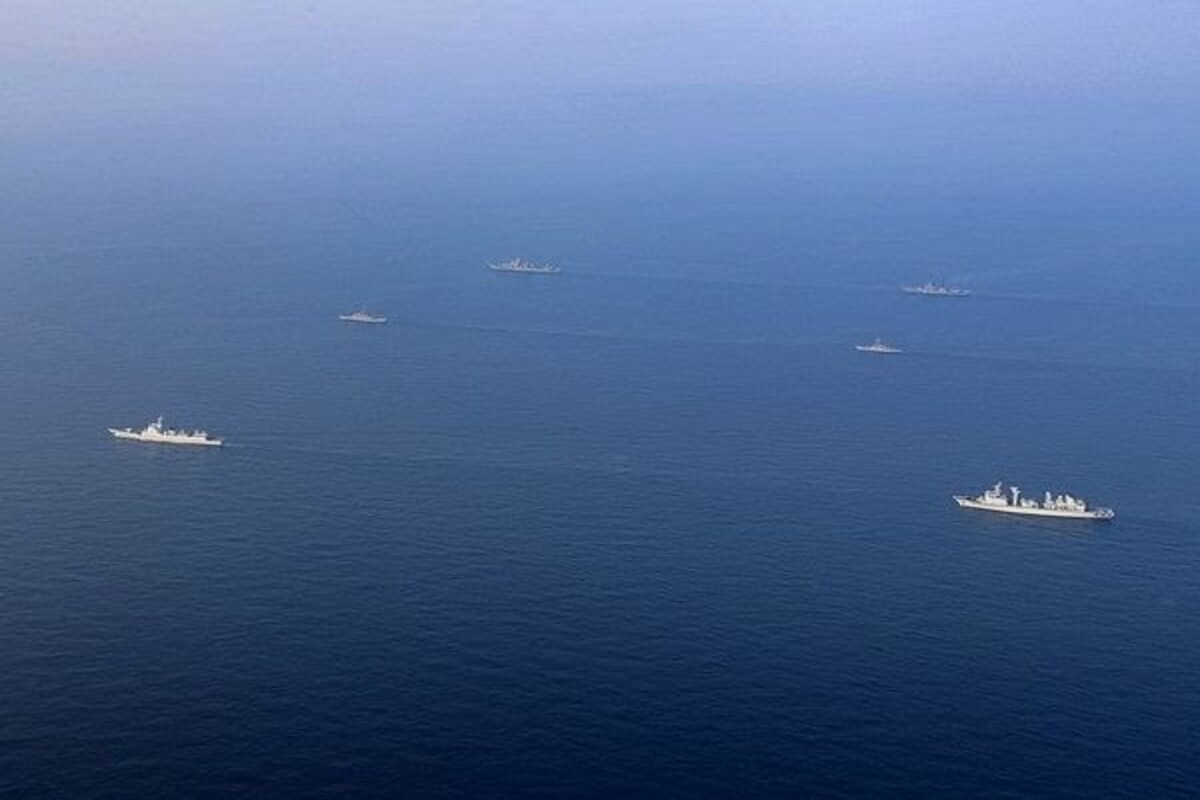China reveals names of moon-landing spacesuit, manned lunar rover
The China Manned Space Agency (CMSA) on Wednesday unveiled the names of the moon-landing spacesuit and manned lunar rover for the country's manned lunar exploration missions.
Naval Base Camilo Osias, a seemingly inconspicuous military facility on the northern tip of the Philippines’ largest island, is quietly undergoing transformative changes that belie its unassuming appearance.
ANI | December 30, 2023 7:35 am

Against the backdrop of mounting geopolitical tensions and growing unease over China’s assertiveness, the Philippines is taking strategic steps to bolster its defence capabilities, Voice of America reported.
The Philippines’ decision to enhance its military collaboration with the United States, particularly the expansion of US military presence at key locations, is a calculated response to the evolving regional dynamics and concerns about China’s expansionist ambitions.
Advertisement
The move, under the Enhanced Defence Cooperation Agreement (EDCA), signifies the Philippines’ proactive stance in navigating the complex geopolitical landscape of the Asia-Pacific region.
Advertisement
Naval Base Camilo Osias, a seemingly inconspicuous military facility on the northern tip of the Philippines’ largest island, is quietly undergoing transformative changes that belie its unassuming appearance. Despite its modest barracks and mostly empty airplane hangar, this site stands as a testament to the evolving US-Philippine relationship, poised to significantly impact Asian security dynamics, as reported by Voice of America.
In mid-December, a small group of Philippine Navy personnel populated Naval Base Camilo Osias, hinting at a calm afternoon. However, beneath this surface tranquillity lies an unfolding strategic shift. With US funding, the base is slated for an overhaul, including a revamped airstrip, a new pier, and expanded facilities to accommodate soldiers. Importantly, this collaboration grants the US military the ability to rotate troops and station weapons at this strategic location, a mere 400 kilometres from Taiwan.
This development is not isolated; it is part of a broader expansion under the Enhanced Defence Cooperation Agreement (EDCA), a bilateral deal originally signed in 2014. The agreement, while stopping short of establishing permanent US bases, facilitates an increased American military presence across the Philippines. In recent times, the US military has gained access to two additional sites near Taiwan and one facing the disputed South China Sea. The total count now encompasses nine strategically located sites across the Philippines.
The historical backdrop of US-Philippine relations adds complexity to this recent development. The Philippines was ruled as a U.S. territory from 1898 to 1946, before gaining independence. In 1951, the two countries agreed to a mutual defence treaty, establishing the oldest U.S. defence treaty alliance in Asia. The US maintained a permanent military presence until the early 1990s when the last US base was removed, aligning with domestic opposition and concerns over Philippine sovereignty, according to Voice of America.
However, in recent years, the Philippines has recalibrated its stance, gradually welcoming back visiting US forces through bilateral agreements, including the EDCA. This shift has intensified under President Ferdinand Marcos Jr, who assumed office in 2022, steering the country toward closer alignment with the United States.
The strategic importance of this collaboration becomes evident against the backdrop of heightened regional tensions. In response to China’s increased assertiveness and harassment of Philippine vessels in the South China Sea, the Philippines is taking steps to strengthen its defence capabilities. Concerns about potential conflict in Taiwan, coupled with China’s belligerent rhetoric, have raised alarm bells in Manila.
The EDCA sites, especially those in the north, are seen as crucial not only for military modernization but also as a deterrent against China’s expansionist goals. With American troops rotating in the Philippines, the nation becomes a formidable obstacle to China’s aspirations, particularly as Beijing seeks to extend its influence beyond the first island chain, encompassing both Taiwan and the Philippines.
Jonathan Malaya, Assistant Director General of the Philippines National Security Council, underscores the imperative of a robust military presence amid territorial disputes with China. The potential of US troops acting as a deterrent gains significance, especially as China escalates its regional ambitions, as reported by Voice of America.
The recent spat between China’s Ambassador Huang Xilian and the Philippines adds another layer of complexity. While criticising the EDCA agreement, Huang issued a veiled threat, linking the Philippines’ stance on Taiwanese independence to the fate of thousands of overseas Philippine workers in Taiwan. This diplomatic row underscores the multifaceted nature of the geopolitical challenges faced by the Philippines.
However, not all stakeholders view the growing US military presence favourably. Manuel Mamba, Governor of Cagayan Province, where two EDCA sites are located, raises historical parallels. He expresses concerns about foreign forces within Philippine territory, drawing parallels to the attack on Pearl Harbour after the presence of US forces in the region.
Asked about such concerns, MaryKay Carlson, the US Ambassador to the Philippines, told VOA that the United States respects the Philippines’ territorial integrity.
She noted Marcos’ public vow that the Philippines will not “abandon even one square inch of territory” to a foreign power.
“We have heard President Marcos loud and clear,” Carlson said. “It’s actually the People’s Republic of China that has established militarised bases within the exclusive economic zone of the Philippines,” according to Voice of America.
Advertisement
The China Manned Space Agency (CMSA) on Wednesday unveiled the names of the moon-landing spacesuit and manned lunar rover for the country's manned lunar exploration missions.
India’s decision to maintain restrictions on Chinese investments is not just a matter of economic policy but a strategic imperative shaped by national security concerns and geopolitical realities.
Over the past few weeks US president Donald Trump has repeatedly claimed that the United States should “take back” the Panama Canal and that it should assume control of Greenland – one way or another.
Advertisement
